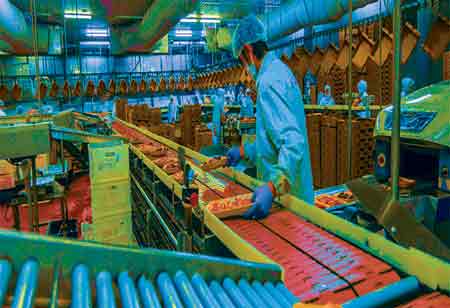Thank you for Subscribing to Food Business Review Weekly Brief
Revolutionizing the Culinary Experience
In the ever-evolving landscape of the culinary industry, a wave of innovative new-age fresh meat and seafood brands is leveraging cutting-edge technology to redefine the consumer experience.

By
Food Business Review | Monday, January 22, 2024
Stay ahead of the industry with exclusive feature stories on the top companies, expert insights and the latest news delivered straight to your inbox. Subscribe today.

Modernising the fresh meat and seafood industry, brands are leveraging technology to enhance customer experiences. Innovations span omnichannel presence, advanced inventory management, predictive analytics, and adherence to stringent quality standards.
FREMONT, CA: In the ever-evolving landscape of the culinary industry, a wave of innovative new-age fresh meat and seafood brands is leveraging cutting-edge technology to redefine the consumer experience. This transformative integration of technology is not merely confined to the production process but extends to every facet of the consumer journey, offering a seamless and enhanced connection between customers and their chosen products.
Changing Consumer Behavior
The recent surge in demand for fresh meat and seafood can be ascribed to the widespread work-from-home culture that emerged during the pandemic. For easy cooking, consumers are gravitating towards pre-prepared foods, DIY dinners, and ready-to-eat options. Modern businesses are changing the way that individuals experience meat by bringing in international quality standards and developing infrastructure and procedures that weren't previously there in the nation.
The goal is to provide a comprehensive online platform with an emphasis on quality and variety to satisfy changing consumer demands for safer, healthier, and more convenient meat products. Over the past two years, there has been a discernible movement from neighbourhood butcher shops to reliable meat brands due to the Covid-19 pandemic. The emphasis on quality and innovation has cultivated a strong and engaged consumer base, fostering a responsive relationship with quick feedback and information exchange.
Omnichannel
These companies are growing their omnichannel presence because they are dedicated to providing high-quality, fresh items to a larger audience. The omnichannel approach consists of online and app stores, physical stores called experience centres, and partnerships with a few contemporary retailers for certain products. Partnerships with channel partners also help to make products widely available. Certain brands quickly adjusted to the new normal and emphasised the value of the direct-to-consumer market, particularly amid the pandemic. The omnichannel strategy is still essential for meeting the rising demand from customers for hyper-local companies that provide premium meat products in a convenient delivery format right to their homes.
Integrating Technology with the Brand Experience
To adapt to evolving customer preferences and market dynamics, embracing technological disruption becomes imperative. In the fragmented and unorganised meat segment, efforts are made to enhance efficiency in sourcing and processing through technology. For instance, direct customer engagement through websites or apps streamlines last-mile inventory management, eliminating the need for extensive stocking and reducing product lifespan.
Technological systems are developed for predictive consumer behaviour analysis, facilitating optimal stocking of branded, chilled meat. Technology serves as a catalyst in transforming business models from B2B to B2C and eventually D2C, with comprehensive IT ecosystems ensuring traceability and transparency. Mystery audit systems, CRM tools, and temperature control monitoring enhance customer experience and product quality.
The meat market stands at a transformative juncture, marked by significant shifts in customer preferences and heightened discussions on food safety, hygiene, and quality throughout the value chain. Established brands with a proven track record are poised to gain a competitive edge in this evolving landscape. With the adaptation to the new normal becoming ingrained, long-term and likely permanent behavioural changes are expected.
Notably, the growth of convenience food in the ready-to-cook and ready-to-eat segments reflects rising demand for products that streamline cooking efforts. The market, valued at $30 billion, exhibits rapid year-on-year growth, particularly in the $2 billion processed foods segment. The D2C segment, addressing the current need, is anticipated to burgeon further. Brands embracing agile business models in response to changing dynamics are positioned for thriving success. With brands embracing digital solutions, traceability, and operational efficiency, the sector is poised for sustained growth, offering consumers an elevated and reliable experience in fresh meat and seafood choices.






